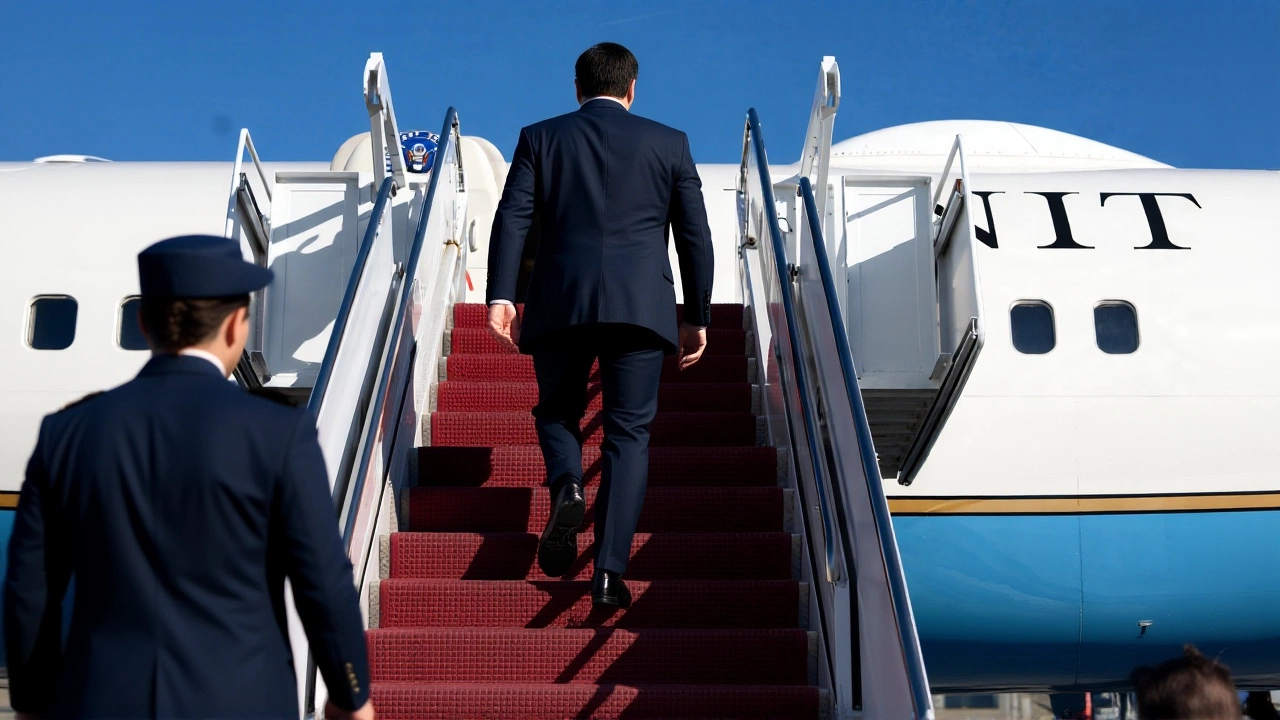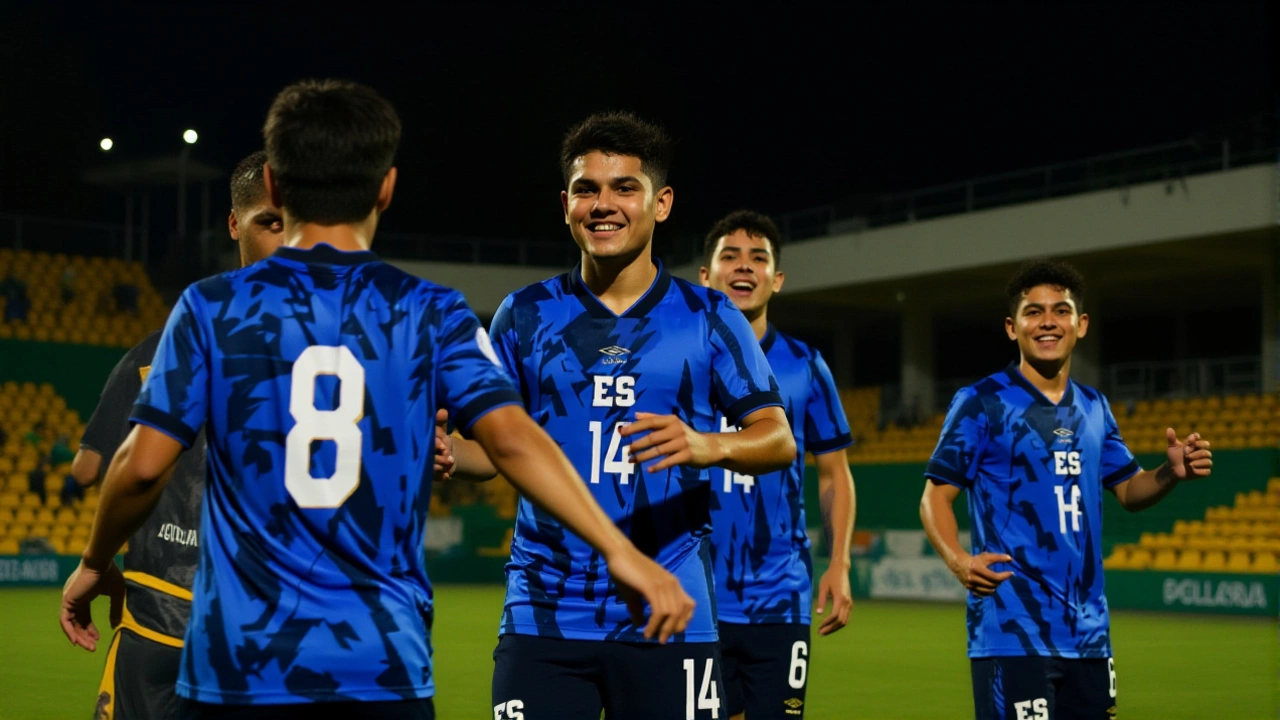The United States didn’t just qualify for the 2025 FIFA U-17 World Cup Qatar — they bulldozed their way in. A 22-0 thrashing of the U.S. Virgin Islands in February 2024 wasn’t just a win; it was a statement. That result, alongside 7-0 and 2-0 victories over Saint Kitts and Nevis and Cuba, sealed their place in the tournament under head coach Gonzalo Segares. Now, with the group stage opener set for November 5, 2025, the U.S. is chasing its 19th U-17 World Cup appearance — a record no other nation has come close to matching.
A Historic First for El Salvador
While the U.S. is a familiar name in youth World Cups, El Salvador is rewriting its football history. For the first time ever — at any age level — the Central American nation has qualified for a FIFA tournament. Their journey through the Concacaf qualifiers wasn’t flashy. No 22-goal blowouts. Just grit, discipline, and a 1-0 win over Honduras in the final qualifying round that sent their players into tears. The team’s captain, 16-year-old midfielder Kevin Rodríguez, told reporters after the match: "We’ve watched these tournaments on TV since we were kids. Now we’re going to be on that field. That’s real."
It’s not just emotional — it’s structural. El Salvador’s youth program, long underfunded and overlooked, received a $1.2 million investment from the national federation in 2022. That funding went toward coaching certifications, travel grants, and a new indoor training center in San Salvador. The payoff? Eight players on their 21-man roster were born in the same neighborhood. They’re not just a team — they’re a neighborhood dream made national.
Panama’s Quiet Rise
Meanwhile, Panama has been quietly rebuilding. Just two years ago, their U-17 side lost all three group stage matches in qualifiers, conceding 12 goals and scoring none. This time? They won two, drew one, and advanced. Their 3-1 win over Jamaica in the final qualifier was their first victory over a Caribbean powerhouse in a decade. Goalkeeper Adrián Márquez, 17, saved a penalty in stoppage time — a moment replayed endlessly on Panamanian social media. "We used to be the team everyone expected to lose to," said assistant coach Luis Fernández. "Now? We’re the ones making people nervous."
They’ll face a familiar foe in Qatar: the U.S. The two met in the 2023 group stage, where the Americans edged them 2-1. That game was a turning point for Panama — they realized they could compete. This time, they’re not just hoping to survive. They’re hoping to shock.

The Bigger Picture: FIFA’s Expansion Changed Everything
The reason these stories are even possible? The 2025 FIFA U-17 World Cup Qatar is the first 48-team edition. Concacaf’s allocation jumped from four to eight spots — a decision made by the FIFA Council on May 15, 2024. That expansion didn’t just give more teams a shot — it gave smaller nations hope.
Before 2025, only powerhouses like the U.S., Mexico, and Brazil consistently qualified. Now, debutants like Fiji, Uganda, and Zambia are in the mix. Uganda’s qualification is especially symbolic — it’s their first-ever appearance in any FIFA tournament. Bolivia, too, returns after a 31-year absence, last qualifying for the 1994 World Cup.
Even the defending champions, Germany, didn’t make it. Eliminated in the round of 32 by Burkina Faso in 2023, they became the first titleholder to miss the next tournament since the format changed. That’s the new reality: no one’s safe.
What Comes Next for the U.S.?
The U.S. will open Group I against Burkina Faso on November 5 — the same team that knocked them out of the 2023 quarterfinals in a wild 5-4 loss to eventual champions Germany. The Americans won their group stage meeting in 2023, 2-1, but that was a different team. This squad, under Segares, is faster, more technically refined, and deeper. Nine players on the roster were called up from MLS academies, including 15-year-old forward Diego Linares, who scored 18 goals in 12 U-17 matches this year.
They’ve trained in Miami since August, working with sports psychologists to handle the pressure of being favorites. "We’re not here to just show up," said Segares in a team meeting last week. "We’re here to remind everyone why we’ve been the standard."
But the real story isn’t just about the U.S. It’s about the ripple effect. When El Salvador’s U-17s played their first official match in 2020, fewer than 200 kids in the country played organized youth soccer. Today? Over 12,000. The same is true in Panama. In both nations, youth academies are being built. Parents are signing up their kids. Coaches are getting paid. That’s the quiet victory — beyond the goals, beyond the rankings.

What’s the Impact Beyond the Pitch?
For countries with little global football presence, a World Cup berth isn’t just about trophies. It’s about identity. It’s about funding. It’s about kids believing they can be more than their circumstances.
In San Salvador, a mural now stands outside the national federation’s building: "El Salvador en el Mundial" — El Salvador at the World Cup. In Panama City, a local TV station aired a documentary on their U-17 team that drew 1.2 million viewers — more than the national news. In the U.S., where youth soccer is saturated, the team’s success is a reminder that dominance isn’t automatic — it’s earned, every cycle.
Frequently Asked Questions
How did El Salvador qualify for their first FIFA tournament?
El Salvador secured their historic spot by winning their final Concacaf qualifying match 1-0 against Honduras in October 2024, finishing second in their group behind the U.S. Their qualification was sealed by a late goal from forward Carlos Mejía and a defensive effort that allowed just two goals in their final three matches — a dramatic turnaround from their previous qualifying cycle, where they lost all three games and conceded 12 goals.
Why is the 2025 U-17 World Cup different from previous editions?
For the first time, the tournament features 48 teams — up from 24 in 2023 — after FIFA approved the expansion on May 15, 2024. Concacaf’s allocation increased from four to eight spots, allowing smaller nations like El Salvador, Panama, Fiji, and Uganda to qualify. This change has reshaped the competitive landscape, making the tournament more diverse and unpredictable than ever before.
Who are the other first-time qualifiers in the 2025 U-17 World Cup?
Alongside El Salvador, debutants include Fiji, Republic of Ireland, Uganda, and Zambia. Uganda’s entry is especially historic — it’s their first-ever appearance in any FIFA tournament. Bolivia also qualifies for the first time since 1994, while Indonesia qualifies by merit for the first time after hosting in 2023. These teams represent a seismic shift in global youth football access.
How did the U.S. perform in past U-17 World Cups?
The U.S. has appeared in 18 previous U-17 World Cups — more than any other nation — and reached the knockout stage 10 times. Their best result was a runner-up finish in 1999. In 2023, they advanced to the quarterfinals before a heartbreaking 5-4 loss to Germany. With a new generation of talent and coach Gonzalo Segares at the helm, they’re aiming to return to the final for the first time since 2005.
What role did the 22-0 win over the U.S. Virgin Islands play in the U.S. qualifying campaign?
The 22-0 victory in February 2024 wasn’t just a statistical anomaly — it was a statement of dominance. It remains the largest margin of victory in Concacaf U-17 qualifying history and showcased the depth of American youth talent. The game also helped the U.S. secure top seeding in their group, avoiding tougher opponents in the final qualifying round and giving their coaches time to test younger players ahead of Qatar.
Why is Panama’s qualification considered a turnaround?
Just two years ago, Panama lost all three group stage matches in qualifying, scoring zero goals and conceding 12. This cycle, they won two games, drew one, and advanced — including a decisive 3-1 win over Jamaica. Their goal difference improved from -9 to +1, and their defensive structure tightened significantly. The turnaround reflects a new focus on technical development and youth infrastructure funded by the Panamanian Football Federation since 2022.

